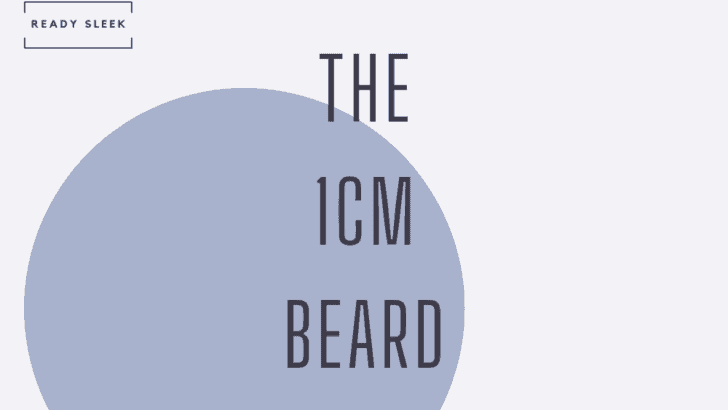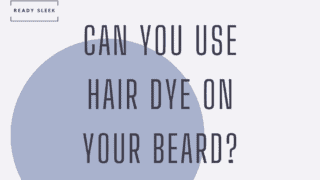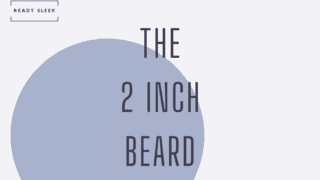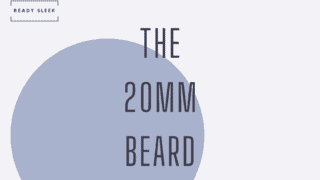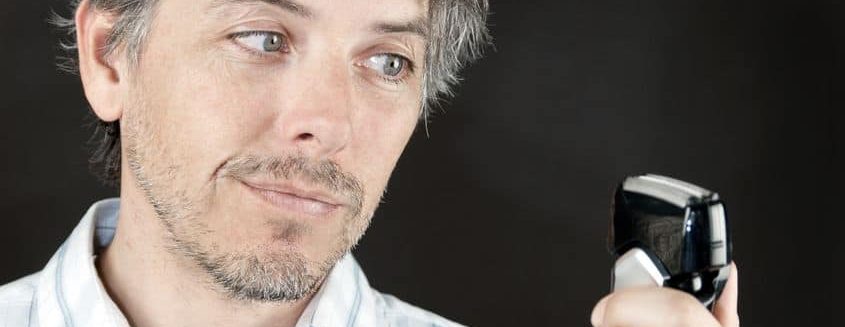The 1cm beard is a phenomenal short beard length that’ll meet the needs of many.
It has the benefit of serious versatility; unquestionable ruggedness and masculinity without the higher maintenance requirements of a longer beard length.
Having said that, it can be a pretty awkward length. Patchiness and itchiness can start to take their toll.
But they can be helped.
You’re about to learn everything you need to know.
How long it takes to grow, some awesome styles you can try out with this beard length, and some essential grooming tips to boot.
Let’s get to it.
How Long Does A 1cm Beard Take To Grow?
Around 4 weeks.
But always remember, men grow facial hair at different rates. Some men will grow their 1cm faster than this, while others will grow it slower.
But on average, it’s safe to say that the majority of men will take around 4 weeks to grow a 1cm beard.
If you’re looking to trim down to 1cm, you’ll need to grow it longer than 1cm first.
To be sure that you’ve grown enough length to do this, you’ll want to grow your beard out for 5-6 weeks to be safe.
After this, you’ll safely be able to say you’ve got enough length to trim down to 1cm.
This may seem like a while. As I mentioned, the beard often enters an “awkward phase” around the 3-4 week mark.
But this is temporary.
Battle through it and the short-bearded rewards will come.
You’ll soon hear of those important grooming tips to help you through this. But first, let’s take a look at some incredible, yet simple beard styles you can experiment with.
Great 1cm Beard Styles To Try Out
If you’ve got a centimeter worth of facial hair to work with, use this as a source of inspiration. It’s a versatile length and there are many choices.
Here are some simple, yet very impressive ones to get you going.
1. Classic Full And Short Beard

Let’s keep it ultra-simple to start.
Here’s a classic full and short beard. Nothing fancy, but highly effective at the same time.
There’s hair on the chin, cheeks, and mustache.
Although it seems easy enough, maintaining a short beard such as this does take some effort.
As you can see, the borders are very well-maintained, keeping the style looking very neat and intentional.
The neckline has been carefully-sculpted.
This is perfect.
The cheek lines are also well-defined while looking natural at the same time.
When you’ve got a 1cm beard, maintaining a classic short beard such as this may be a great style to start off with.
If you find that there’s just too much volume, or you’d prefer an edgier, more angular, or modern style, there are plenty of others to choose from.
Overall, this is a sophisticated and very popular way to style a centimeter worth of facial hair.
2. Short Boxed Beard
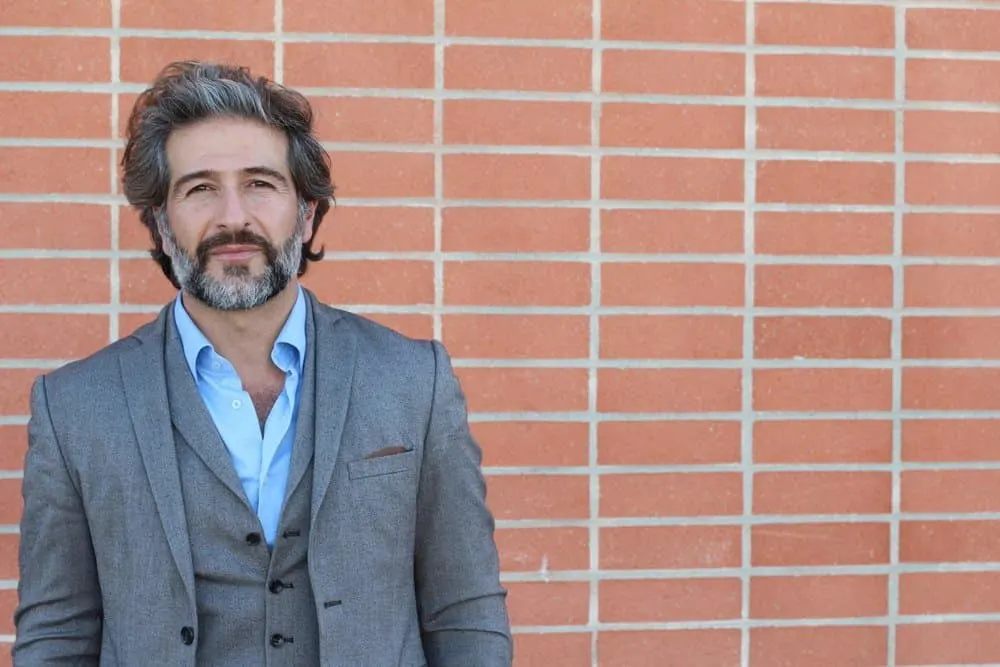
This may be the perfect progression from a classic full and short beard like the one above.
The key difference with the “short boxed beard” is the contour of the cheek lines.
As you can see, the cheek lines have been dropped and slope downward. The curved contours are what give the short boxed beard it’s characteristic aesthetic.
For one, it adds prominence to the cheekbones. If you’re looking to draw attention or add some definition to the cheekbones, this may be the style for you.
It also just looks less full. Men with rounder faces, in particular, may find this beneficial.
They may have found that a beard style like the classic short beard just adds too much volume on the sides, making the face look even fuller.
The simple practice of dropping the cheek lines may be all that’s needed.
It’s also a great way to just add some angles to the face. Sharp lines and contours can make any face look more chiseled and defined.
Of course, it does have some additional maintenance requirements.
For one, you’ll need to maintain those cheek lines. You’ll want to make sure the curvature is symmetrical on either side and that it lines up with the sideburns nicely.
You’ll also have to shave above the cheek lines to remove any stubble or stray hairs.
This is what gives it that ultra-sleek definition, particularly if you use a straight razor to really hone in on the lines.
Ultimately, any style where you have to shape the facial hair to your desire will add a little bit of effort to your grooming routine.
The short boxed beard is no exception.
However, the results usually speak for themselves and justify the additional effort required.
Try it out.
3. Full Goatee

A goatee is any facial hairstyle where there’s hair on the chin but not on the cheeks. If there’s any hair on the cheeks, it’s usually just a bit of stubble.
There are many variations to choose from.
One way of categorizing them is to divide them into “connected” and “disconnected” goatee styles.
“Connected” goatee styles are where the chin hair and mustache connect.
“Disconnected” goatee styles are where the chin hair and mustache don’t connect.
This is an example of a connected goatee style.
You could call it a “full goatee” that encircles the mouth.
The soul patch is the small patch of hair that lies immediately beneath the bottom lip.
As you can see, the soul patch here blends into the chin beard beneath it. The chin beard extends along the jawline on either side.
Not much – just a little on either side.
4. Full Goatee With Chinstrap

Yep, it’s another full goatee.
The hair encircles the mouth.
It looks great on its own, but can very effectively be combined with a chinstrap.
A “chinstrap” beard is a strip of hair that extends along the lower jawline from one ear to the other.
On its own, the chinstrap can sometimes come across as looking incomplete or even a little immature. This is down to personal opinion, of course.
At the end of the day, when a Full Goatee is combined with a chinstrap, the result is often very impressive indeed.
You’ve got the sophistication of a goatee with the additional benefits that a chinstrap beard does bring.
The main benefit I’m talking about here is the definition of the jawline.
It’s similar to a short boxed beard if you think about it.
It’s almost like a very extreme version of a short boxed beard where the cheek lines are dropped as low as they can go.
As you’d expect, it does add the additional maintenance requirements of having to shape and maintain the chinstrap and also shaving the cheeks regularly.
But it’s yet another style you can sculpt out of a 1cm beard. Hopefully, you’re starting to see just how versatile this length of facial hair really is.
Grooming Tips For The 1cm Beard
As with any short beard, there are certain grooming habits that you should definitely get used to.
Here are some tips that would serve any 1cm beard very well indeed.
1. Start Brushing
The 1cm mark is a pretty good landmark.
It’s around this point, after 3-4 weeks of growth, where the benefits of brushing with a boar bristle beard brush really become apparent.
Some may feel it’s too early, although most experienced beardsmen would strongly disagree.
The main benefit of starting to brush this early would be that you start to train the beard hair to grow the way you want it to.
Beard hairs tend to stick out and grow in all sorts of directions, particularly in awkward phases of growth.
Boar bristle beard brushes are fantastic because they’re able to gently guide the beard hair to lie the way you want it to.
In general, this will mostly be downward.
Over time, with repeated and regular brushing, the hair will need less guidance and you’ll find that you won’t even need to brush as much.
It’s important to note that boar bristle beard brushes are far superior to synthetic ones.
The consistency of boar hair is similar to that of beard hair, so it’s able to glide through with minimal pulling and tugging.
Synthetic brushes, on the other hand, do tug, pull, and create static that frizzes up the beard hair.
In some ways, not brushing at all is better than brushing with a synthetic brush.
Boar brushes are also great for redistributing natural oils such as sebum. This prevents it from clogging up and leads to a healthy-looking sheen as opposed to greasiness.
It’ll reduce patchiness, as well as itchiness.
A boar bristle beard brush is one of the best investments you could make for your beard.
2. Start Oiling (If You Haven’t Already)
Beard oil is phenomenal at moisturizing the beard and the facial skin as well.
It’s thoroughly nourishing and the scented ones do lead to irresistible aromas.
You should really have started using beard oil before the 1cm mark. In fact, there’s a good argument for using beard oil on heavy stubble.
It really isn’t too early.
Applying the oil just before you brush is great.
The boar bristles will distribute the beard oil throughout the beard a lot more efficiently and evenly than your fingers would be able to.
It’s another great way to reduce patchiness and itchiness.
3. Avoid Playing With It
It’s interesting.
Once you get the 1cm mark after around 4 weeks of growth, you’ll probably notice that it becomes exponentially more fun to play with your beard.
In the moment, it feels so good that it could quite reasonably be considered one of the main perks of growing a beard.
The main problem it causes is that it unknowingly causes the beard to look patchy.
You’re essentially manually separating the beard hairs from each other without even knowing it.
Even worse – you may actually be tugging out beard hairs prematurely.
Try to avoid developing this habit.
4. Start Getting Used To Beard Scissors
It’s probably the least efficient method of hair removal you could opt for.
But beard scissors are way more versatile than any trimmer or clipper would be.
After 4 weeks of growth, you may notice stray hairs that stick out and don’t play by the rules.
You want to get rid of them but don’t want to risk trimming or clipping too much.
After all, you don’t want to risk undoing four weeks of growth.
Get used to using beard scissors wherever possible. It’s a fantastic skill to develop, especially as your beard grows longer.
You won’t have to take the risk of a clipper removing chunks off of a beard you’ve been growing for months in the matter of a few seconds.
You can be so much more intricate and meticulous about it.
Like trimming a bonsai tree in a state of zen-like focus.
5. Define The Neckline
Defining the neckline is important when you’ve got stubble, but when you’ve got a short beard, it’s essential.
The neckline is the border between the neck hair and the neck skin.
Maintaining it is an important feature that separates the amateurs from the serious beardsmen.
Not too high and not too low.
Having a layer of neck hair that crawls towards the chest is almost always unsightly.
Avoid it.
Define the neckline and shave the neck hair that lies beneath it.
It isn’t exciting, but it makes all the difference.
Conclusion
It’s a beard length that will give you plenty of options if you choose to adopt it.
The beauty of it is that you can drift in and out of it as you please.
If you feel as though you could do with stubble or a clean-shaven face for a change, it’s fine.
Go for it.
The 1cm beard will be back in a matter of a few weeks. Unlike a longer beard, it really doesn’t take a long time to grow.
Enjoy. Have fun with it.
Ready Sleek founder. Obsessed with casual style and the minimalist approach to building a highly functional wardrobe. Also a fan of classic, vintage hairstyles.

